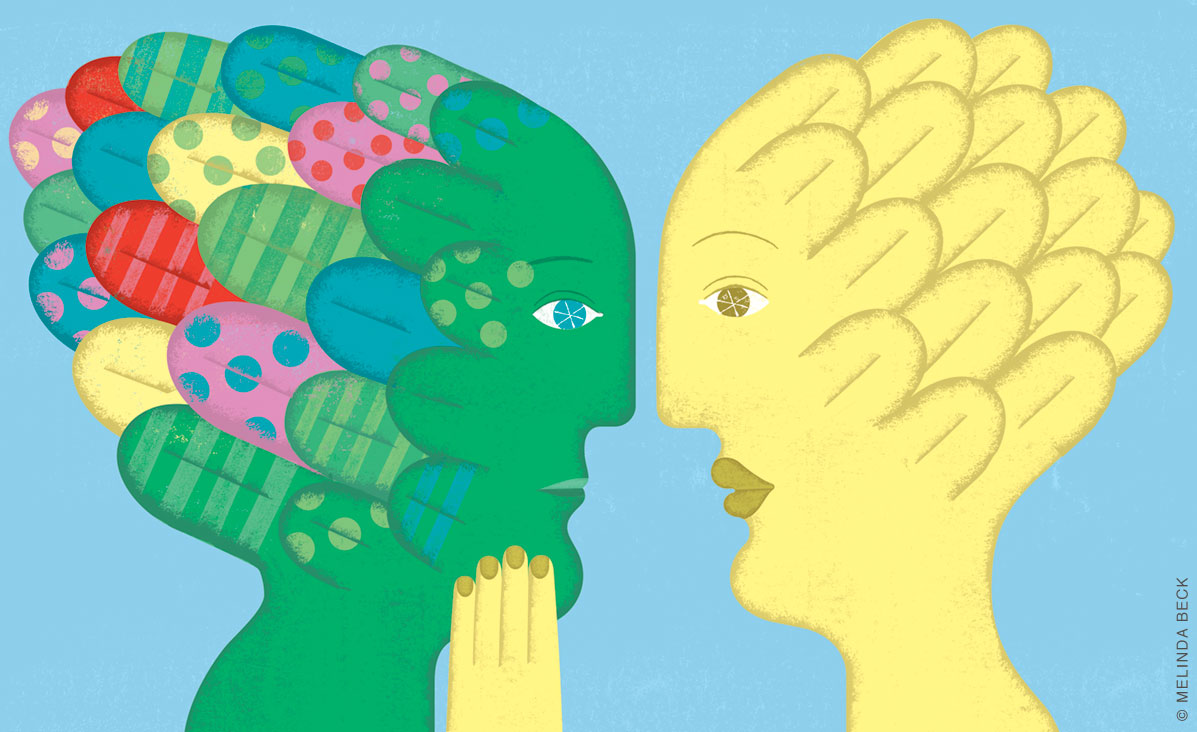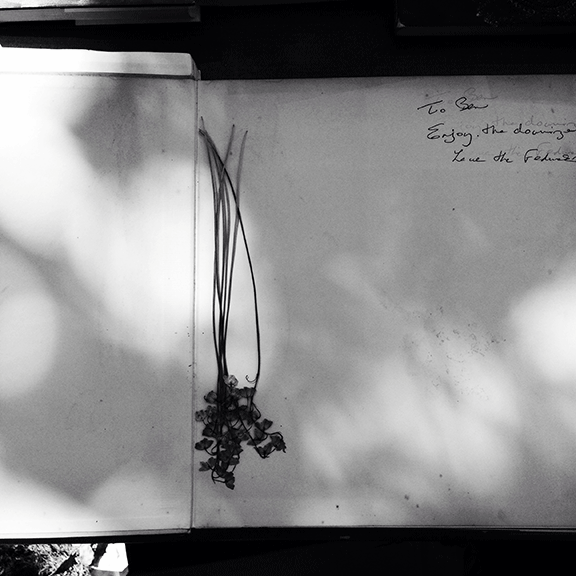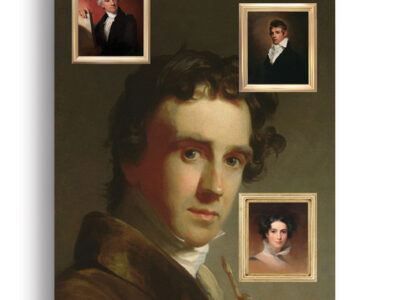
Wendy Steiner returned to her roots—and to Penn—to discuss her latest book on aesthetics and female agency.
Wendy Steiner had been asking nuanced questions about beauty, women’s taste, and freedom of choice for more than a decade—and had even written several books and operas on them—when she almost stopped entirely.
It was the 2010s, and she’d just published The Real Real Thing, which explores our cultural fixation on models and posing. Still, “I was getting sort of discouraged about the whole enterprise,” Steiner recalled at a recent Kelly Writer’s House appearance. “The world was being confronted with all kinds of terrible situations,” she added, “and it wasn’t clear that another book on beauty was important enough to worry about at this time.”
After she told a stranger at a party that she studied aesthetics and the woman raved about a recent facial she’d had, mistaking Steiner for an esthetician, “I figured this is it,” she recalled. “The world does not need my services in this way.”
But then an evolutionary biologist changed her mind, and helped lead to her new book, The Beauty of Choice: On Women, Art, and Freedom, which came out last July. The Richard L. Fisher Professor of English Emerita at Penn, Steiner returned to the Writer’s House in late January to share her latest work and discuss it with Penn English professor Heather Love.
Steiner said that she spent a decade and several books, including The Trouble with Beauty (1999) and Venus in Exile (2001), developing a theory of beauty as “a special interaction between a person and something else.” In Steiner’s view, by discovering their taste—whether for an object or another person—women also forge their sense of identity. It’s a shift from rationalism to emotion and pleasure, she said: I think, therefore I am becomes I like, therefore I am.
Steiner has traced that idea back over a thousand years, through myriad women writers, artists, and characters. Around the year 1000, for instance, a Japanese lady-in-waiting catalogued everything she liked and disliked in The Pillow Book. She even reflected on her own preoccupation with taste, writing: “If I can spread out a finely woven, green straw mat and examine the white bordering with its vivid black patterns, I somehow feel that I cannot turn my back on this world, and life actually seems precious to me.”
A story rooted in female agency from The Canterbury Tales inspired Steiner to pen her first opera libretto, The Loathly Lady [“The Wife, the Lady, and the Book of Dames,” Mar|Apr 2007]. She’s written five more operas since, “all of which are concerned in one way or another with these questions of female taste and freedom of choice,” she said.
Still, as 2020 approached, Steiner was questioning the value of these deep dives into aesthetics. Then she picked up ornithologist Richard O. Prum’s 2017 book, The Evolution of Beauty. “I ordered it and was astonished,” she said. “It traversed exactly the same ground in considering beauty in the world of animals as I had been considering beauty in the human and artistic sphere.”
Leaning into Darwin’s theory of sexual selection, Prum posits that across species, female birds’ preferences actually drive evolution. Males can display themselves, hoping to be chosen as mates, but females make the final decision—and it’s often based on aesthetics. Great argus pheasants have evolved giant feathers covered in 3-D golden orbs because females like them. Club-winged manakins have learned to seduce by producing violin-like tones with their wings.
Reinvigorated by Prum’s work, “I began to think that aesthetics is not irrelevant to important matters in the world,” Steiner said. “The ‘I like,’ the expression of taste, the response to beauty … they actually change the species.”
The result is a book that touts the importance of both aesthetics and women’s freedom of choice. As it blends art criticism with evolutionary theory, aesthetics, and political history, Steiner’s Beauty of Choice spans ancient texts, postmodern fiction, contemporary visual artists, and other sources that interest and inspire her.
She walked the Writer’s House audience through several of the artworks featured in her new book, starting with the cover: a zoomed-in shot of the monument “Heroinat”(Heroines). The large relief of a woman’s head was erected in 2015 to honor rape victims in the Kosovo war of the late 1990s. Its face is a computer-generated composite of many Kosovar women, formed into a sculpture by 20,000 pins—each with an image of the same face on them. Every pin represents a rape victim, but here they’re recast as medals that honor 20,000 heroines.
Irish-born artist Barbara MacCallum appears in the book, too. She creates casts of her husband’s body, then dresses them in intricate clothing made from printouts of his physics articles. Each work’s title is named for that particular physics paper. “She thinks of her artworks as representations and expressions of her marriage,” Steiner said. “They’ve been married for 50 years, and her art is an ongoing interaction with him.”
She also showed several pieces by the contemporary painter Marlene Dumas, whose work often interacts with that of modernist male artists—as evidenced by Picasso’s “The Weeping Woman” (1937) and Dumas’s answer, “Dora Maar (The Woman Who Saw Picasso Cry)” (2008).
Noting the book’s broad array of artists, Love asked if Steiner ever encounters art that is “beyond the pale for you”—that is, “misogynist or negative forms of art that you think don’t serve this function of democracy.”
Steiner thought back to 1995, when she was giving talks on her book The Scandal of Pleasure. Someone in every audience would inevitably bring up Andre Serrano’s “Piss Christ” as an offensive piece that shouldn’t be shown. “My response was, Well, I’m offended by a lot of things in the world, but so what?” Steiner said. “Why is it that people feel that if they are offended, it’s a catastrophe?”
Antisemitism, racism, and other “material that is appalling” so often flood the classic texts that English majors and scholars study, she said, but “we wouldn’t ever want to stop them from being read.” It traces back to her idea of I like, therefore I am. Whether it’s deeply offensive or sublimely beautiful, all art gives us a chance to examine our individual tastes, aesthetics, and even ethics.
“The most disgusting screed in art can still cause you to say that’s the most disgusting screed I’ve ever seen in art,” she said. “And that’s a valuable thing.”
—Molly Petrilla C’06




